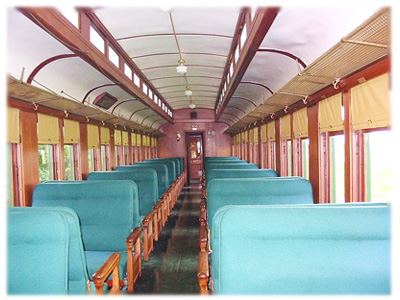Coach 106

 TECHNICAL DATA
TECHNICAL DATA
Built in 1912 as first-class number 751 by Canadian Pacific’s Angus Shops. It is 72’8” in length and has a seating capacity of 72. As a non-smoking coach it lacks a separate smoker compartment. The interior features mahogany paneling, oak trim, and full-length brass luggage racks. As the youngest coach in the PDC fleet, it had just a very small coal stove. By this time locomotive steam was the accepted heating method.
The coach was sold to the Greater Winnipeg Water District Railway in 1956. There it was numbered 54 and later 354. It came to the PDC in 1970 as part of an equipment trade but didn’t enter service until 1974 as it required extensive restoration work.
SOME HISTORY
In 1912 and 1913 CPR built many new wooden coaches, but it also built its first all-steel coach and by 1914 wooden coach construction was all finished, it would be steel from then on. Many wooden coaches were rebuilt with steel underframes and sheathing. Those, like 106, that escaped this rebuild, were relegated to secondary services. It is believed that 106 was sent to Winnipeg in January 1913 and spent its entire life on the Prairies.
Hundreds of coaches like 106 served on CPR branch lines right across the country. In Manitoba one of the most remembered of these lines was the popular run to the cottage community of Winnipeg Beach on the western shore of Lake Winnipeg. There CPR operated a large amusement park and dance hall, built to compete with a similar park the Canadian Northern had built at Grand Beach just across the lake. Rides on the Beach Specials, and especially the homebound Moonlight Specials after the last dance, still hold a special place in Winnipeg’s collective memory. They have even entered literature, playing a major role in one story in Gabrielle Roy’s “The Road Past Altamont”. These trains, sometimes more than a dozen per day, were predominately wooden coaches right to the end.
